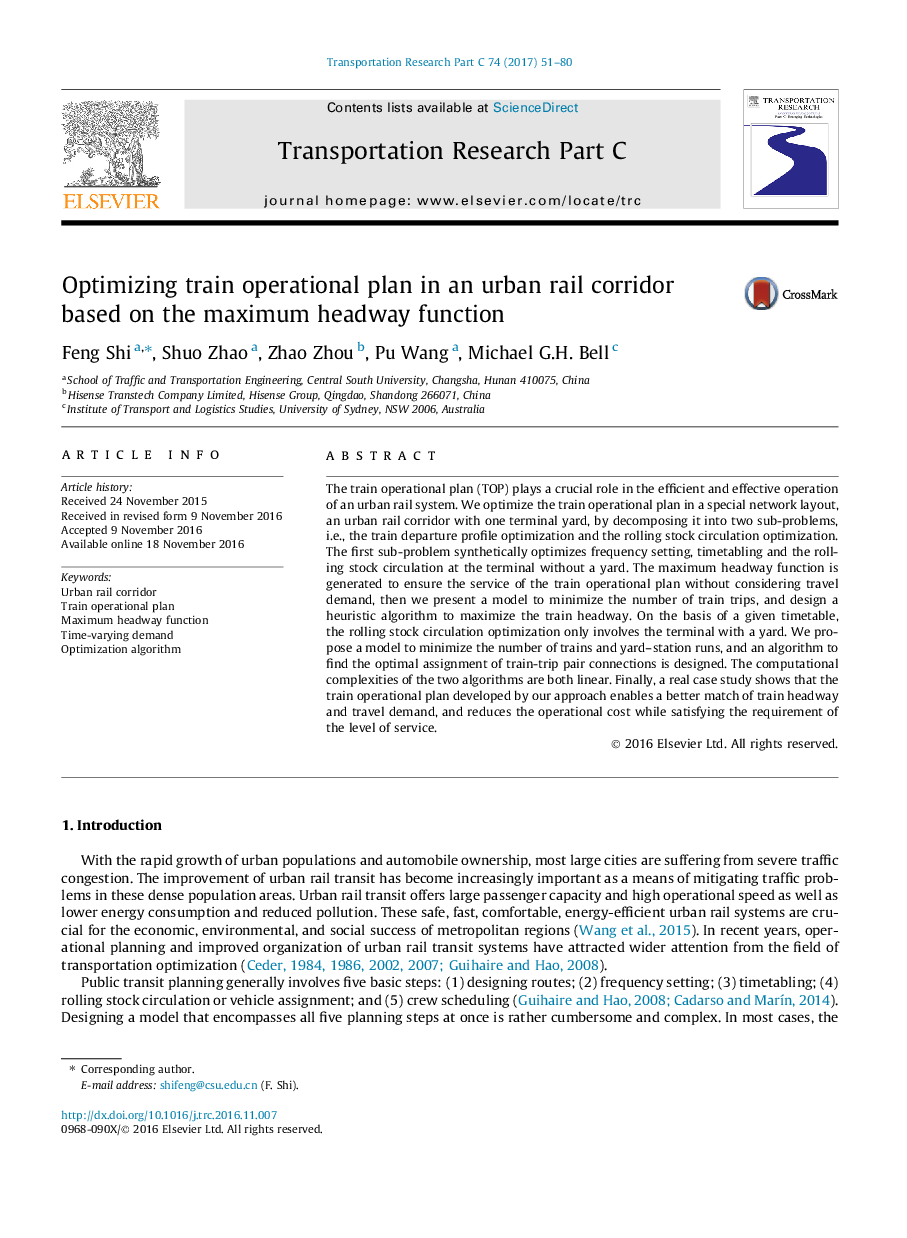| Article ID | Journal | Published Year | Pages | File Type |
|---|---|---|---|---|
| 4968578 | Transportation Research Part C: Emerging Technologies | 2017 | 30 Pages |
â¢Propose the optimization of the train operational plan in an urban rail corridor.â¢Develop the formulation of maximum headway function.â¢Decompose the problem into two sub-problems.â¢Design two efficient algorithms with linear computational complexity.
The train operational plan (TOP) plays a crucial role in the efficient and effective operation of an urban rail system. We optimize the train operational plan in a special network layout, an urban rail corridor with one terminal yard, by decomposing it into two sub-problems, i.e., the train departure profile optimization and the rolling stock circulation optimization. The first sub-problem synthetically optimizes frequency setting, timetabling and the rolling stock circulation at the terminal without a yard. The maximum headway function is generated to ensure the service of the train operational plan without considering travel demand, then we present a model to minimize the number of train trips, and design a heuristic algorithm to maximize the train headway. On the basis of a given timetable, the rolling stock circulation optimization only involves the terminal with a yard. We propose a model to minimize the number of trains and yard-station runs, and an algorithm to find the optimal assignment of train-trip pair connections is designed. The computational complexities of the two algorithms are both linear. Finally, a real case study shows that the train operational plan developed by our approach enables a better match of train headway and travel demand, and reduces the operational cost while satisfying the requirement of the level of service.
